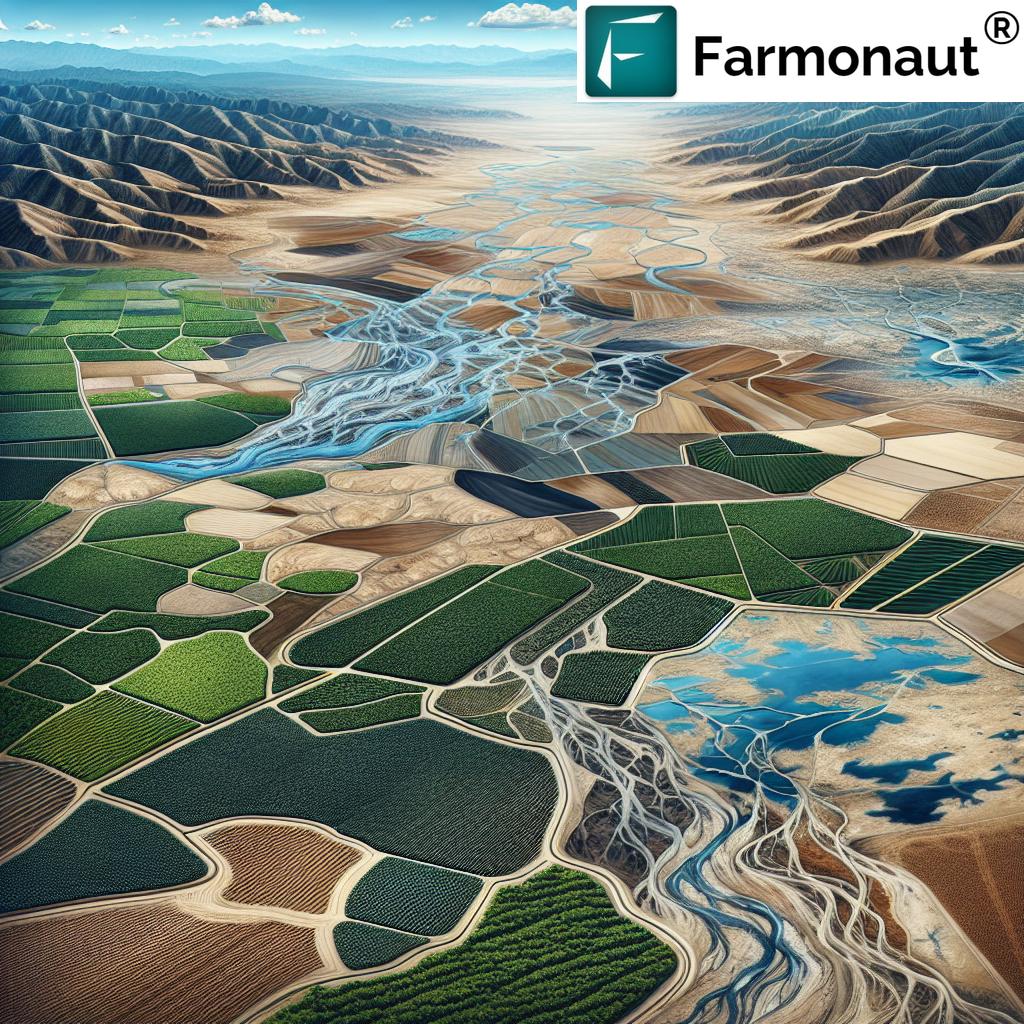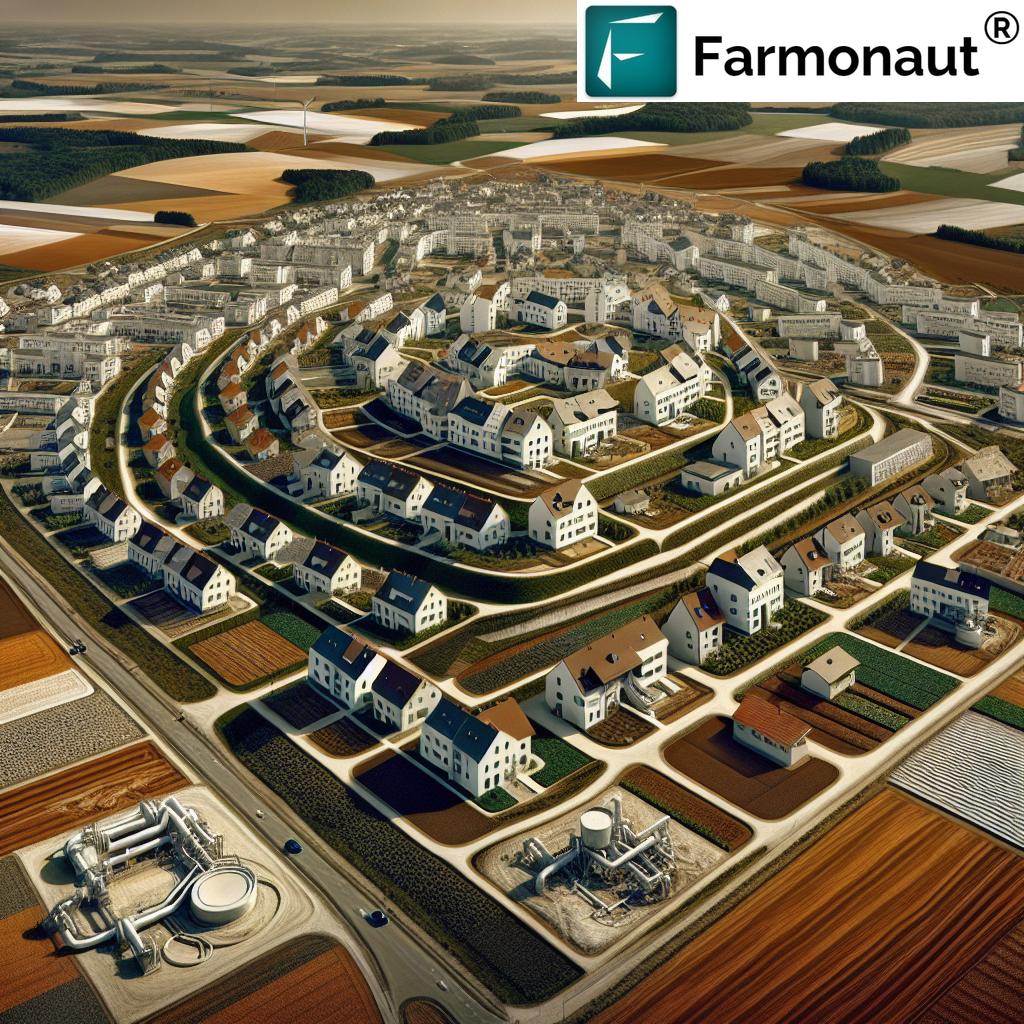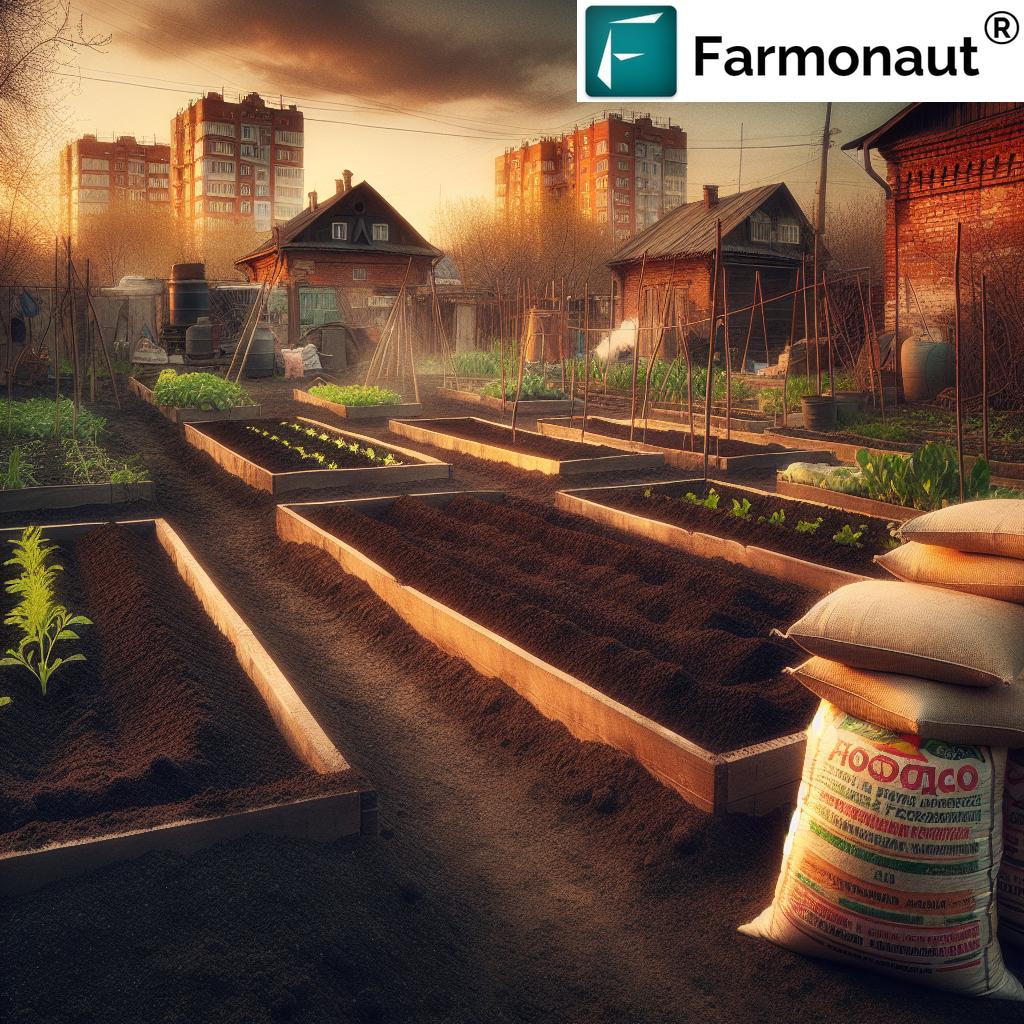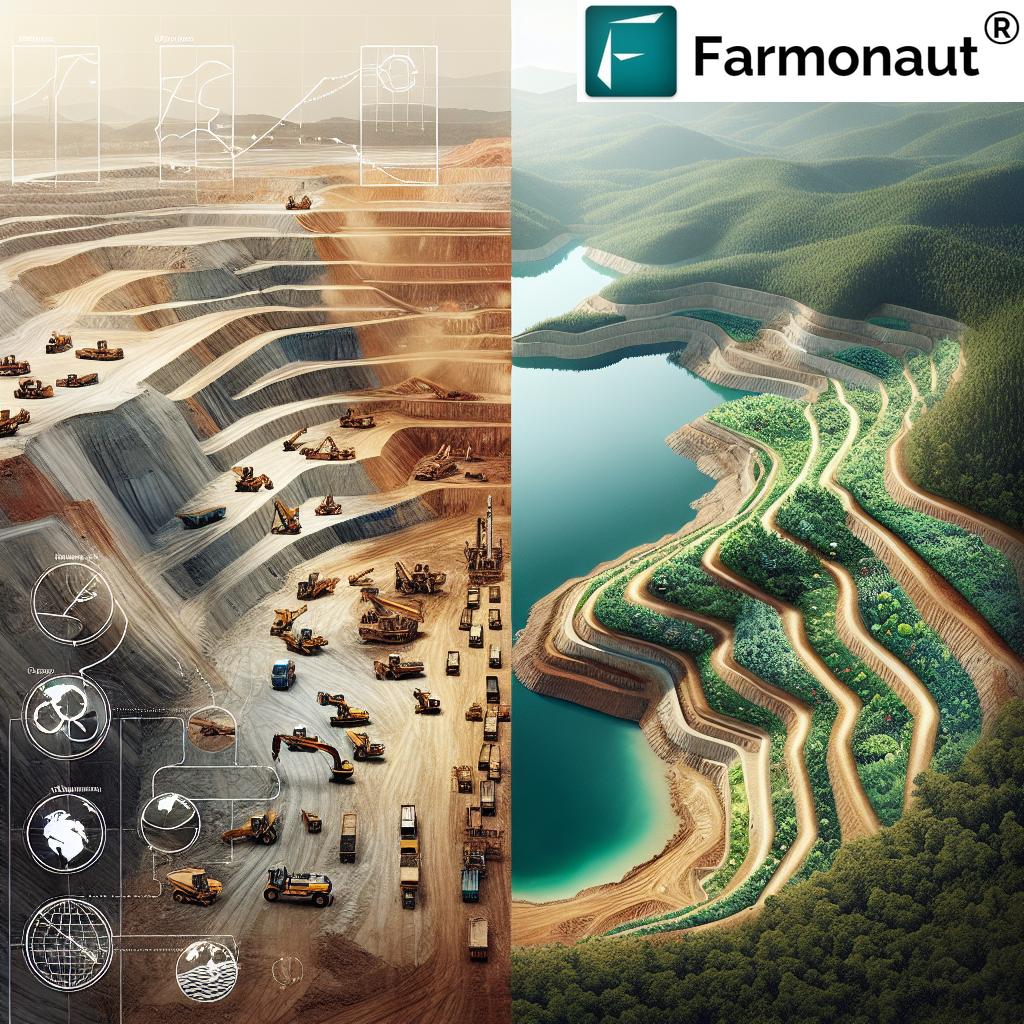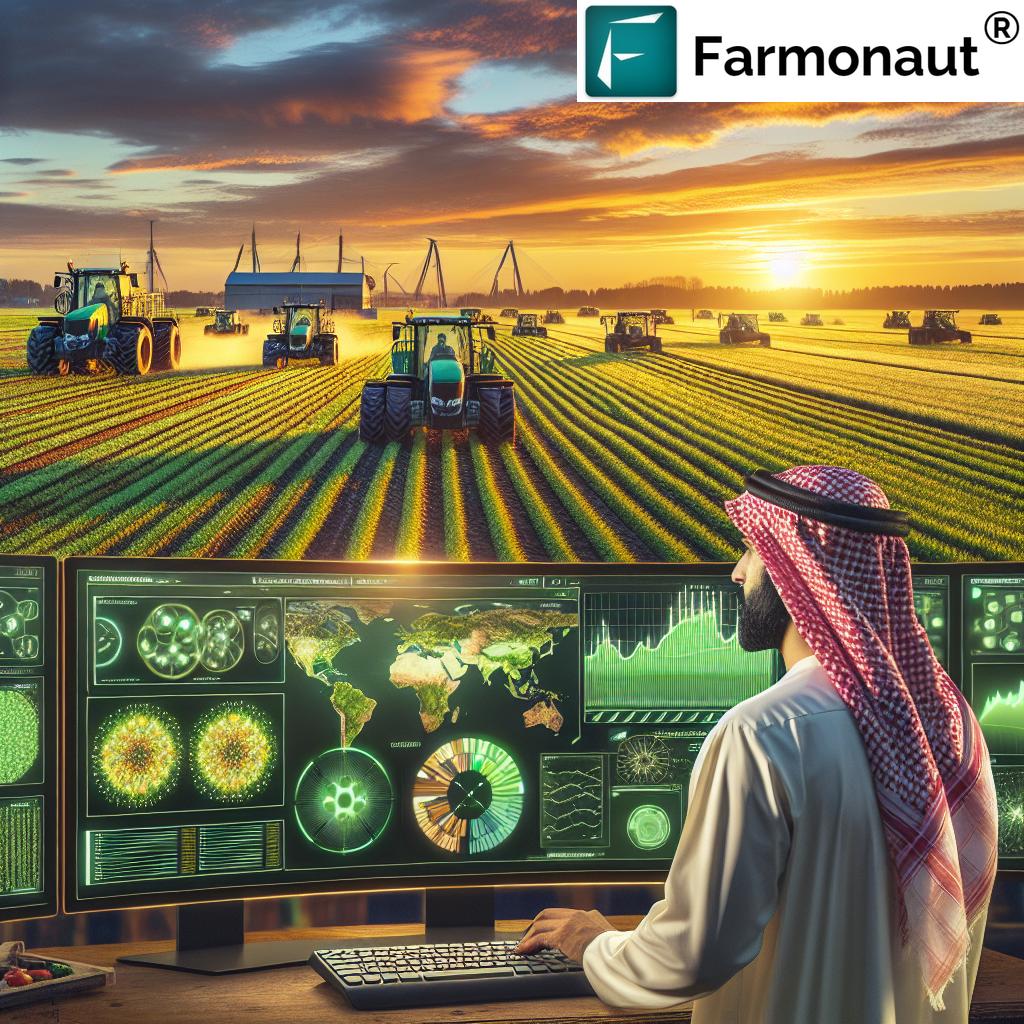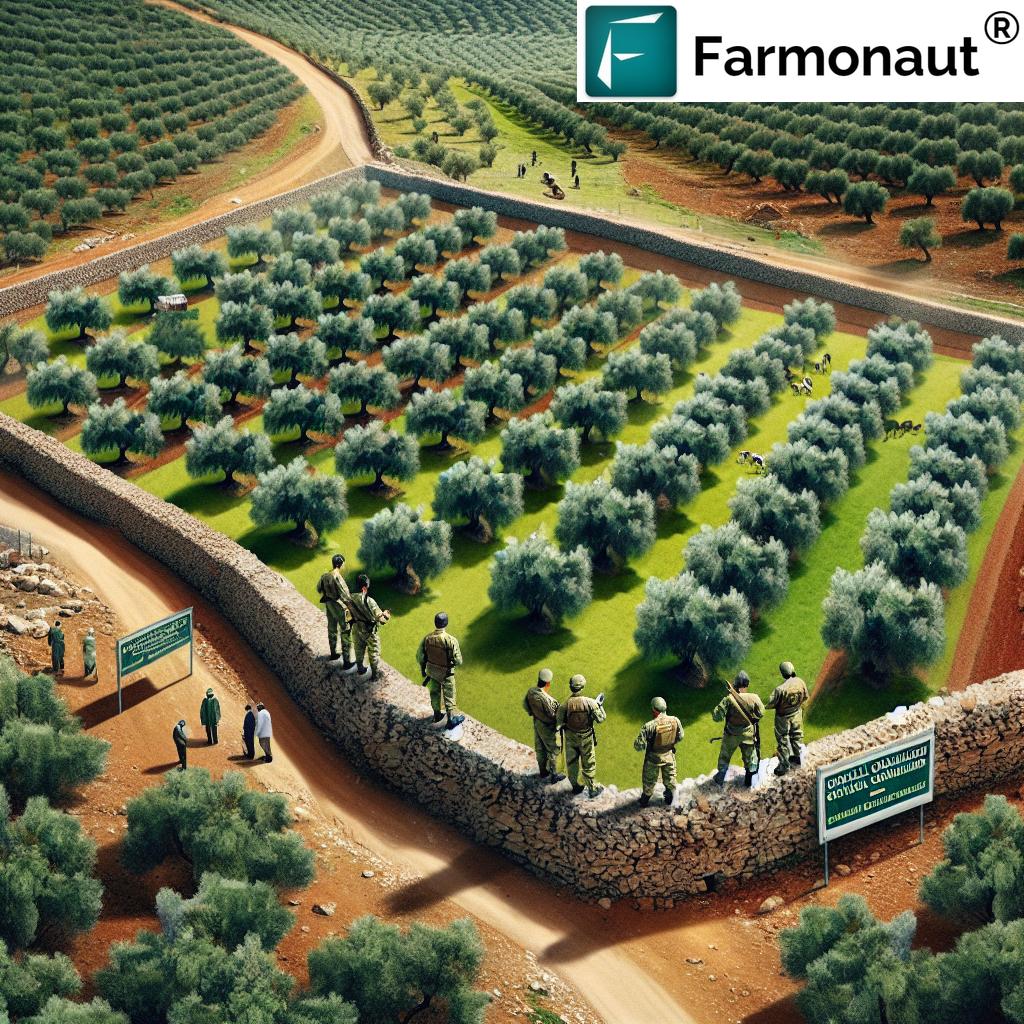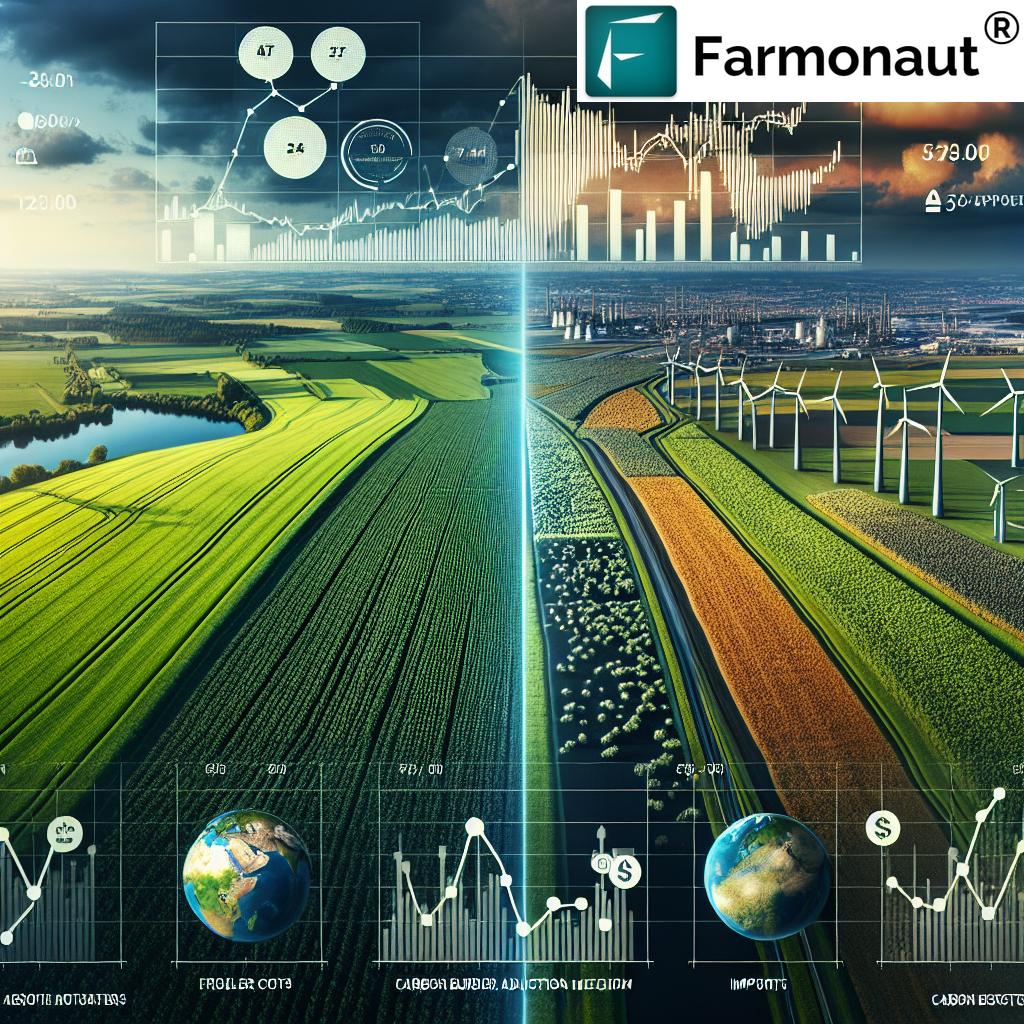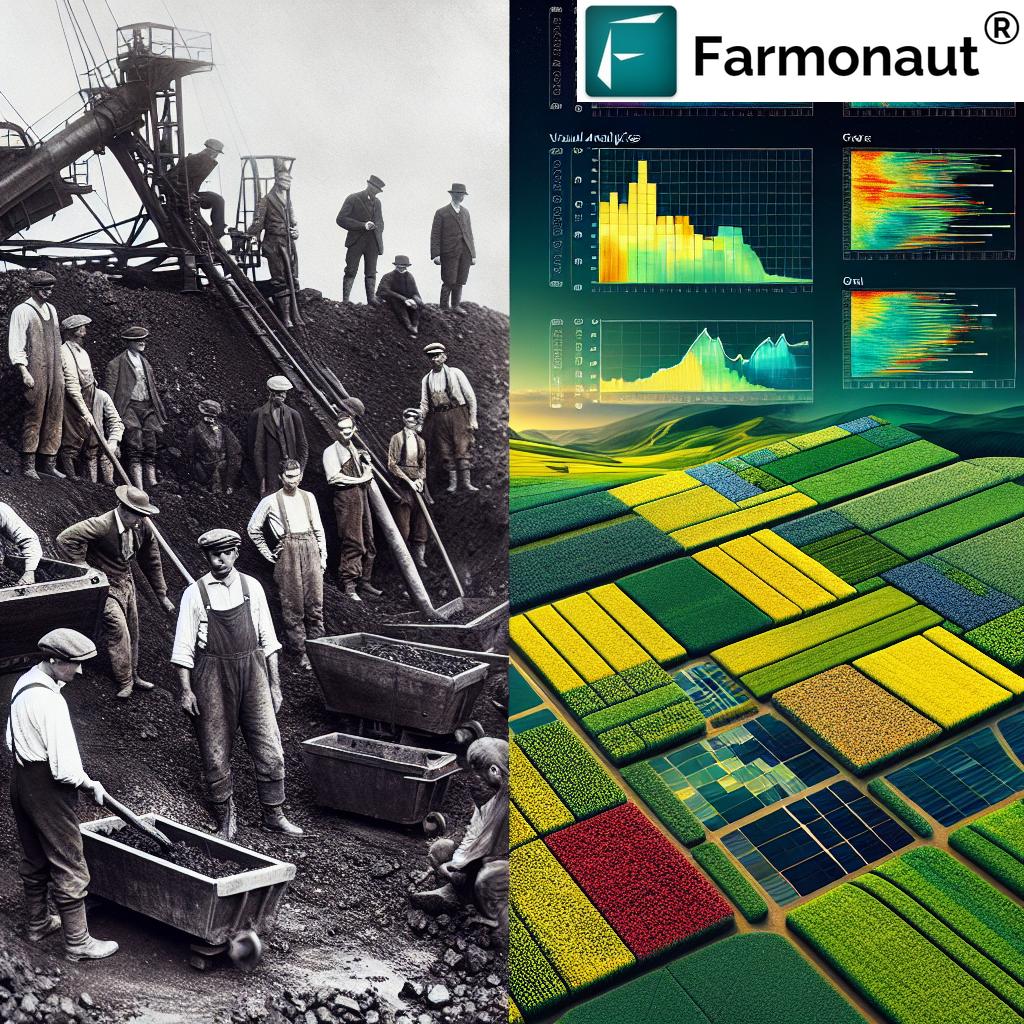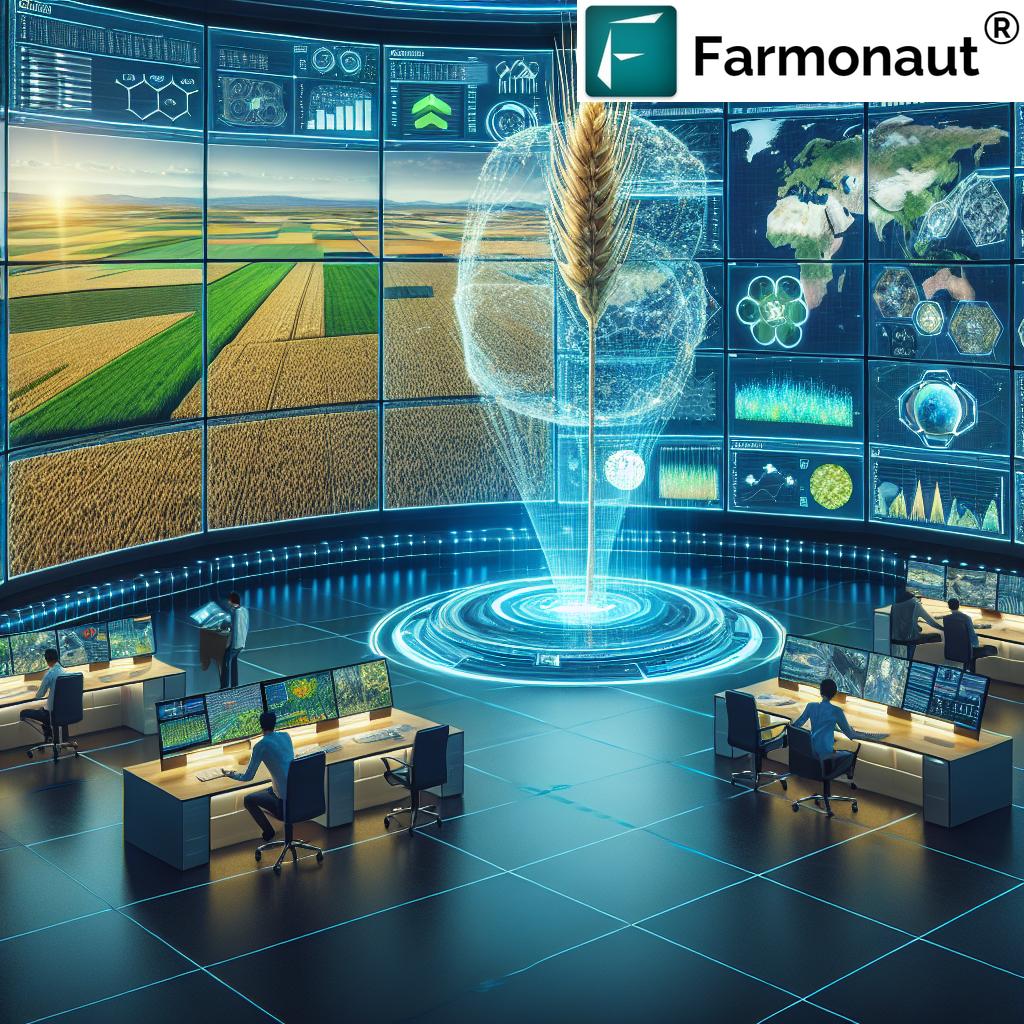Farmonaut: Revolutionizing EU Agricultural Trade with GIS and Remote Sensing for Sustainable Rural Development
“The EU’s Common Agricultural Policy affects over 22 million farmers and agricultural workers across 27 member states.”
In the ever-evolving landscape of European agriculture, we find ourselves at a pivotal moment where technology and sustainability converge to shape the future of farming. As representatives of Farmonaut, we are excited to explore the transformative role of Geographic Information Systems (GIS) and remote sensing in revolutionizing agricultural trade within the European Union (EU). This comprehensive analysis delves into the intricate world of agricultural statistics, forecasts, and the EU’s Common Agricultural Policy (CAP), shedding light on how these elements are intertwined with sustainable rural development.
The EU Common Agricultural Policy: A Cornerstone of Sustainable Agriculture
The Common Agricultural Policy stands as a testament to the EU’s commitment to fostering sustainable agriculture practices while ensuring food security and rural development. Established in 1962, the CAP has undergone numerous reforms to address the changing needs of farmers, consumers, and the environment. Today, it plays a crucial role in shaping agricultural trade data and promoting sustainable farming methods across the union.
- Promotes sustainable agriculture practices
- Supports rural development strategies
- Influences agricultural trade data
- Encourages adoption of farm management technologies
As we navigate through the complexities of modern agriculture, the CAP serves as a guiding framework for balancing economic growth with environmental stewardship. It’s within this context that Farmonaut’s innovative solutions align seamlessly with the EU’s agricultural objectives, offering cutting-edge tools for precision farming and sustainable resource management.
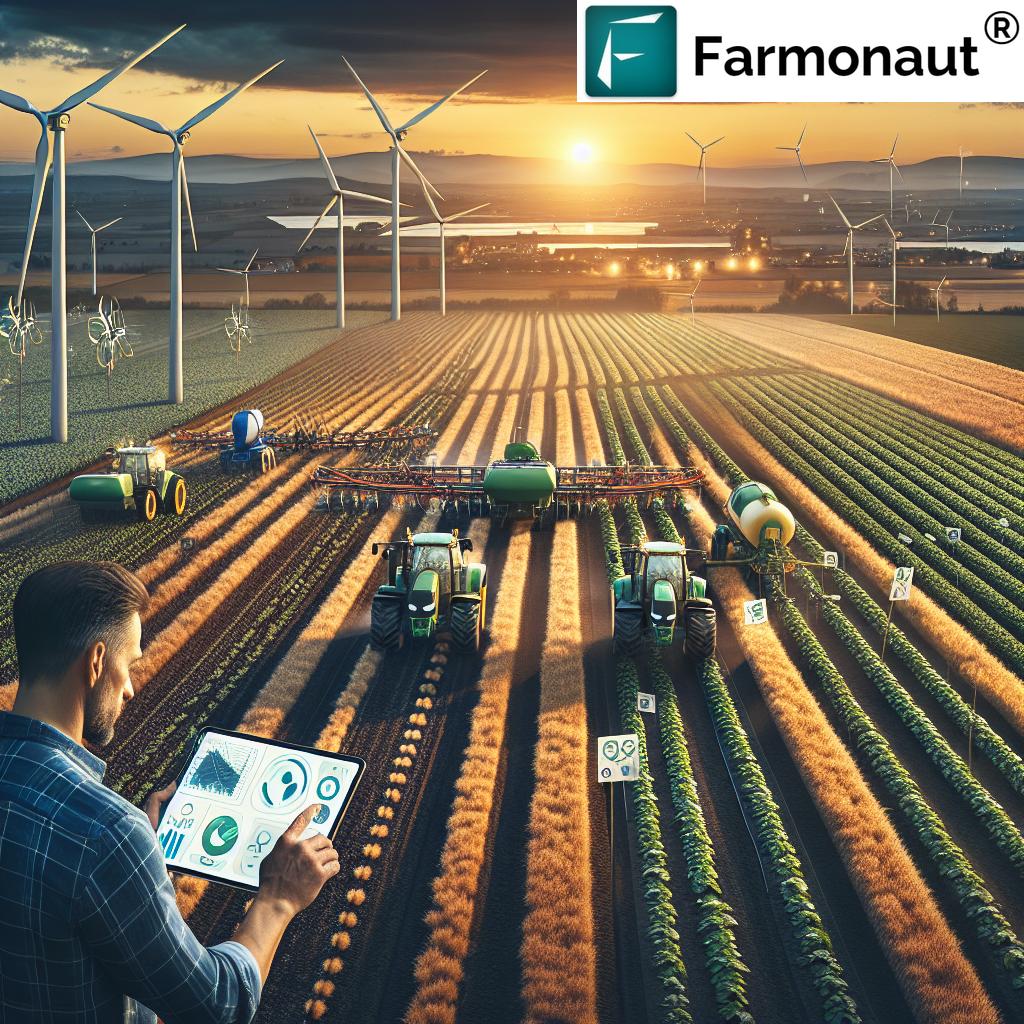
GIS in Agriculture: Mapping the Future of Farming
Geographic Information Systems have emerged as a game-changer in the agricultural sector, offering unprecedented insights into spatial data and land use patterns. At Farmonaut, we harness the power of GIS to provide farmers and policymakers with valuable tools for decision-making and resource allocation.
GIS in agriculture enables:
- Precise crop mapping and monitoring
- Soil analysis and fertility management
- Efficient irrigation planning
- Pest and disease tracking
By integrating GIS with remote sensing technologies, we create a comprehensive view of agricultural landscapes, allowing for more informed decisions on crop production, plant products, and animal products. This synergy between GIS and remote sensing forms the backbone of precision farming techniques, which are rapidly gaining traction across the EU.
Remote Sensing: Eyes in the Sky for Precision Agriculture
Remote sensing technology has revolutionized the way we monitor and manage agricultural activities. Through satellite imagery and aerial surveys, we can now gather real-time data on crop health, soil moisture, and environmental conditions without setting foot in the field. This wealth of information is crucial for implementing sustainable agriculture practices and optimizing farm management.
Key applications of remote sensing in agriculture include:
- Crop yield estimation
- Drought monitoring
- Assessment of pest infestations
- Evaluation of crop damage from natural disasters
At Farmonaut, we leverage advanced remote sensing techniques to provide our users with actionable insights, enabling them to make data-driven decisions that enhance productivity while minimizing environmental impact.
Agricultural Statistics and Forecasts: The Backbone of Informed Decision-Making
In the realm of EU agricultural policy and trade, accurate statistics and reliable forecasts are indispensable. These data sets form the foundation upon which critical decisions are made, affecting everything from crop production quotas to international trade agreements.
Agricultural statistics encompass a wide range of indicators, including:
- Crop yields and production volumes
- Livestock numbers and animal products
- Farm structure and labor force
- Agricultural prices and economic indicators
Forecasts, on the other hand, provide a glimpse into the future of agricultural markets, helping stakeholders prepare for potential challenges and opportunities. At Farmonaut, we integrate these statistical insights with our GIS and remote sensing data to offer a comprehensive view of the agricultural landscape.
Sustainable Rural Development: Bridging Technology and Tradition
Rural development is a cornerstone of the EU’s agricultural policy, aimed at preserving the vitality of rural areas while promoting sustainable practices. The integration of modern technologies with traditional farming knowledge is key to achieving this balance.
Strategies for sustainable rural development include:
- Diversification of rural economies
- Investment in infrastructure and digital connectivity
- Promotion of agri-tourism and local food systems
- Support for young farmers and innovation in agriculture
Farmonaut’s suite of tools contributes to these efforts by empowering farmers with data-driven insights, enabling them to optimize their operations while adhering to sustainable practices. Our platform serves as a bridge between cutting-edge technology and the rich agricultural heritage of rural communities.
“Organic farming in the EU has grown by over 70% in the last decade, covering 8.5% of total agricultural land.”
Organic Farming Certification: Ensuring Quality and Sustainability
The rise of organic farming in the EU is a testament to the growing consumer demand for sustainable and environmentally friendly food products. Organic farming certification plays a crucial role in maintaining the integrity of these practices and building consumer trust.
Key aspects of organic farming certification include:
- Strict regulations on pesticide and fertilizer use
- Animal welfare standards
- Soil conservation practices
- Biodiversity preservation
Farmonaut’s technology supports organic farmers by providing precise monitoring tools that help maintain compliance with certification standards while optimizing crop yields and resource use.
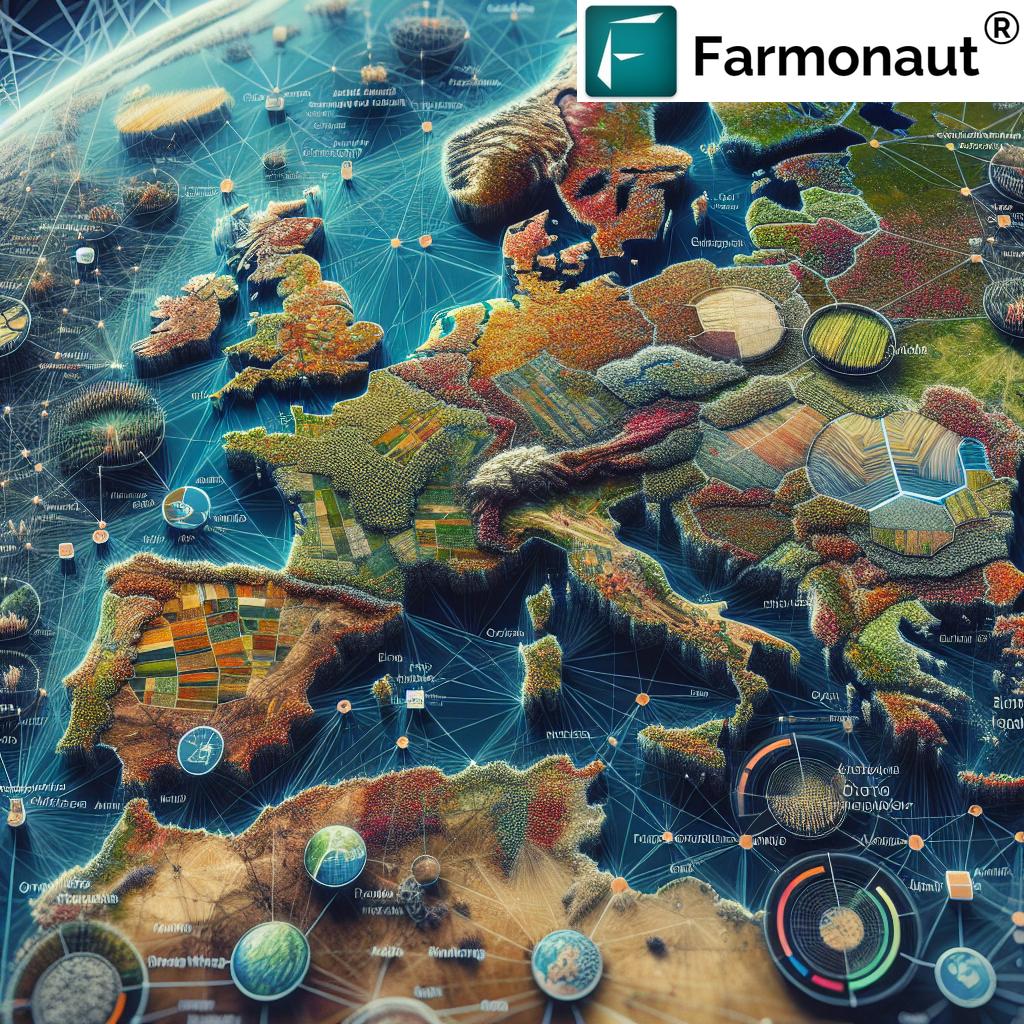
Agricultural Supply Chain Management: From Farm to Fork
Efficient supply chain management is critical for ensuring food security and maximizing the value of agricultural products. In the EU, the concept of “farm to fork” emphasizes transparency and traceability throughout the food chain.
Key components of agricultural supply chain management include:
- Logistics and transportation optimization
- Quality control and food safety measures
- Inventory management and demand forecasting
- Sustainable packaging and waste reduction
Farmonaut’s platform contributes to supply chain efficiency by providing real-time data on crop production and quality, enabling better coordination between farmers, processors, and retailers.
International Cooperation and Agricultural Trade
The EU’s agricultural sector is deeply integrated into global markets, necessitating robust international cooperation and trade agreements. These partnerships are essential for ensuring food security, stabilizing markets, and promoting sustainable practices worldwide.
Key aspects of EU agricultural trade include:
- Bilateral and multilateral trade agreements
- Tariff quotas and customs regulations
- Sanitary and phytosanitary measures
- Geographical indications and quality schemes
Farmonaut’s technology supports international trade by providing accurate data on crop production and quality, facilitating compliance with trade regulations and standards.
The Role of Farm Advisory Systems in Modern Agriculture
Farm advisory systems play a crucial role in disseminating knowledge and best practices to farmers across the EU. These systems help bridge the gap between research and practice, ensuring that farmers have access to the latest innovations and sustainable farming techniques.
Key functions of farm advisory systems include:
- Technical assistance and problem-solving
- Training on new technologies and farming methods
- Guidance on compliance with EU regulations
- Support for accessing EU funding and subsidies
Farmonaut’s platform complements these advisory systems by providing real-time data and insights that advisors can use to offer more targeted and effective guidance to farmers.
Precision Farming Techniques: Maximizing Efficiency and Sustainability
Precision farming represents the cutting edge of agricultural technology, allowing farmers to optimize their operations at a granular level. By leveraging data from various sources, including GIS and remote sensing, precision farming techniques enable more efficient use of resources and reduced environmental impact.
Key precision farming techniques include:
- Variable rate application of inputs
- GPS-guided machinery operation
- Automated irrigation systems
- Precision livestock farming
Farmonaut’s suite of tools is designed to support precision farming practices, providing farmers with the data and insights needed to implement these advanced techniques effectively.
The Impact of Climate Change on EU Agriculture
Climate change poses significant challenges to agriculture in the EU, affecting crop yields, pest pressures, and water availability. Adapting to these changes while mitigating agriculture’s contribution to greenhouse gas emissions is a key priority for policymakers and farmers alike.
Strategies for addressing climate change in agriculture include:
- Development of drought-resistant crop varieties
- Implementation of water-saving irrigation techniques
- Adoption of conservation tillage practices
- Increased use of renewable energy in farm operations
Farmonaut’s technology aids in climate change adaptation by providing early warning systems for extreme weather events and helping farmers optimize resource use in changing conditions.
The Future of EU Agriculture: Trends and Projections
As we look to the future of EU agriculture, several key trends and projections emerge that will shape the sector in the coming years:
- Increased adoption of digital farming technologies
- Growing emphasis on sustainability and circular economy principles
- Shift towards more plant-based diets and alternative protein sources
- Greater focus on biodiversity and ecosystem services in farming practices
Farmonaut is committed to staying at the forefront of these trends, continually evolving our platform to meet the changing needs of farmers and policymakers in the EU and beyond.
| Metric | 2020 Value | 2025 Projection | Impact on Sustainability |
|---|---|---|---|
| Organic Farming Area (hectares) | 14.7 million | 18.5 million | High positive impact |
| GIS-enabled Farm Management (% adoption) | 25% | 45% | Moderate positive impact |
| Agricultural Exports (billion €) | 181.2 | 210.0 | Neutral impact |
| CAP Budget Allocation (billion €) | 58.12 | 55.24 | Moderate positive impact |
| Carbon Footprint Reduction (%) | 10% | 20% | High positive impact |
Conclusion: Embracing Innovation for a Sustainable Agricultural Future
As we’ve explored throughout this comprehensive analysis, the landscape of EU agriculture is undergoing a profound transformation. The integration of GIS, remote sensing, and precision farming techniques is revolutionizing how we approach crop production, resource management, and rural development. At Farmonaut, we’re proud to be at the forefront of this agricultural revolution, providing innovative solutions that align with the EU’s vision for sustainable and efficient farming practices.
By leveraging the power of data-driven insights, we’re empowering farmers, policymakers, and stakeholders across the agricultural supply chain to make informed decisions that balance productivity with environmental stewardship. As we look to the future, we remain committed to advancing sustainable agriculture practices, supporting rural development, and contributing to the resilience and prosperity of EU agriculture.
Together, we can build a more sustainable, efficient, and prosperous agricultural sector that meets the challenges of the 21st century while preserving the rich farming heritage of the European Union.
Explore Farmonaut’s solutions:
For developers: API | API Developer Docs
Farmonaut Subscriptions
Frequently Asked Questions
Q: How does Farmonaut contribute to sustainable agriculture in the EU?
A: Farmonaut provides advanced GIS and remote sensing tools that enable precision farming techniques, optimize resource use, and support sustainable agricultural practices in line with EU policies.
Q: Can Farmonaut’s technology be used for organic farming certification?
A: Yes, Farmonaut’s platform offers precise monitoring tools that can help organic farmers maintain compliance with certification standards while optimizing their operations.
Q: How does Farmonaut support international agricultural trade?
A: By providing accurate data on crop production and quality, Farmonaut facilitates compliance with trade regulations and standards, supporting smooth international trade operations.
Q: Is Farmonaut’s technology adaptable to different types of farms and crops?
A: Absolutely. Farmonaut’s solutions are designed to be scalable and adaptable, catering to various farm sizes and crop types across the EU.
Q: How does Farmonaut help farmers adapt to climate change?
A: Farmonaut provides early warning systems for extreme weather events and helps farmers optimize resource use in changing climatic conditions, enhancing resilience to climate change impacts.





